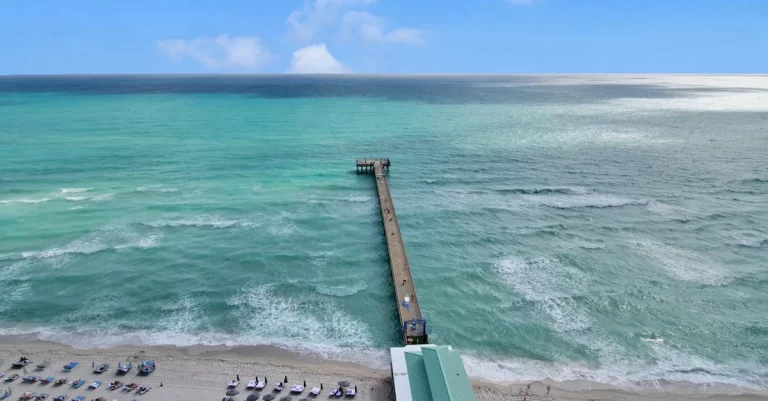How Long Is Summer Break In California? A Detailed Look
After a long school year, California students eagerly await those sunny summer months free from homework and classes. But just how long does summer break last in the Golden State?
If you’re short on time, here’s a quick answer to your question: The length of summer break in California is approximately 10-12 weeks, generally starting in early June after the school year ends and finishing up in mid to late August.
In this in-depth guide, we’ll break down the details on the duration of summer vacation across California school districts. You’ll find out when summer break starts and ends, how the length is determined, differences between districts, and how it compares to other states.
Average Length of Summer Break in California
Summer break is a much-anticipated time for students and families in California. It provides a welcome opportunity to relax, recharge, and explore new experiences. But how long is summer break in California? Let’s take a closer look at the average length of summer break in the Golden State.
Traditional Academic Calendar
In California, the length of summer break varies depending on the school district and the specific academic calendar followed by each school. However, the traditional academic calendar typically includes a summer break that lasts around 10 to 12 weeks.
This means that students can enjoy a few months of freedom from regular school routines.
Year-Round Education
It’s important to note that not all schools in California follow the traditional academic calendar. Some schools adopt a year-round education system, which means that students have shorter, more frequent breaks throughout the year, including a shorter summer break.
The length of summer break in a year-round education system can vary, but it is usually around 4 to 6 weeks. This allows for a balance between academic instruction and time off for students and teachers.
Impact of COVID-19
It’s worth mentioning that the COVID-19 pandemic has had a significant impact on the length of summer break in California. In response to the pandemic, many school districts implemented distance learning and adjusted their academic calendars.
Some districts opted for an extended summer break to allow for additional planning and preparation for the upcoming school year. Others transitioned to year-round education to accommodate the changing circumstances.
Additional Resources
If you would like to learn more about the average length of summer break in California, you can visit the California Department of Education website. They provide valuable information about school calendars and academic schedules in the state.
Remember, while the average length of summer break in California may vary, it’s important to make the most of this time and create lasting memories with friends and family. Whether it’s exploring the beautiful beaches, embarking on a road trip, or simply enjoying some leisurely activities, summer break is a time to savor and cherish.
Key Dates for the Start and End of Summer
Summer break is a highly anticipated time of the year for students and families in California. It offers a well-deserved break from the rigors of academic life and provides an opportunity to relax, recharge, and explore new adventures.
However, the duration of summer break can vary depending on the school district and educational institution. Let’s take a detailed look at the key dates for the start and end of summer break in California.
Traditional Academic Calendar
The majority of schools in California follow the traditional academic calendar, which typically begins in late August or early September and ends in late May or early June. This means that students can expect a summer break that spans approximately two and a half months.
However, it’s important to note that specific start and end dates may vary from district to district.
Year-Round Education Calendar
Some schools in California operate on a year-round education calendar, which divides the school year into multiple shorter terms with shorter breaks in between. While this may mean less time off in the summer compared to schools on the traditional calendar, students on the year-round calendar often enjoy more frequent breaks throughout the year.
Variances Across School Districts
It’s crucial to keep in mind that summer break dates can vary across different school districts within California. Districts have the autonomy to determine their academic calendars based on factors such as local weather patterns, community preferences, and collective bargaining agreements.
Therefore, it’s advisable to consult the official website or contact the specific school district to get the most accurate and up-to-date information on summer break dates.
Planning for Summer
Knowing the key dates for the start and end of summer break can help families plan their vacations, summer camps, and other activities accordingly. It’s essential to take advantage of this time to create memorable experiences and make the most of the warm weather and longer days.
Whether it’s exploring the beautiful beaches along the California coast or embarking on a thrilling road trip to iconic destinations, the possibilities for summer adventures are endless in the Golden State.
How the Length of Summer Break is Determined
Summer break in California is determined based on various factors, including the minimum number of instructional days required by the state and the local district calendars. Let’s take a closer look at how these factors influence the length of summer break.
Minimum Number of Instructional Days
The California Education Code sets a minimum number of instructional days that schools must provide to their students. According to the code, elementary schools must have a minimum of 180 instructional days in a school year, while secondary schools must have a minimum of 180 instructional days or 64,800 instructional minutes.
This means that schools in California are required to provide a certain number of days or minutes of instruction throughout the year. The length of summer break is determined by subtracting these required instructional days or minutes from the total number of days in a school year.
Local District Calendars
While the state sets the minimum number of instructional days, local school districts have the flexibility to determine the specific dates for their academic calendar, including the start and end of summer break.
Local district calendars take into consideration various factors, such as holidays, professional development days for teachers, and community-specific events. These factors can vary from district to district, resulting in differences in the length of summer break across California.
It’s important to note that local district calendars are typically developed in consultation with teachers, parents, and other stakeholders to ensure that they meet the needs of the community.
To find out the specific dates for summer break in a particular school district, it is recommended to visit the official website of the district or contact the district office directly. Additionally, the California Department of Education provides a list of school district websites where you can find more information about their calendars here.
Variations Between School Districts
When it comes to the duration of summer break in California, there are significant variations between school districts. While some districts adhere to a standard summer break length, others may have shorter or longer breaks depending on various factors.
These variations can be influenced by factors such as district policies, academic calendars, and local community needs.
Factors Influencing Summer Break Length
One factor that can influence the length of summer break is the academic calendar set by the school district. Each district has the autonomy to determine their academic schedule, including the start and end dates of the school year.
Some districts may choose to have a longer summer break to accommodate local traditions or events, while others may opt for a shorter break to align with other school districts or to meet specific curriculum requirements.
Another factor that can affect the length of summer break is district policies and regulations. Some districts may have policies that require a specific number of instructional days per school year, which can impact the duration of summer break.
For example, a district with a shorter summer break may compensate by having longer instructional days or a longer school year overall.
Community needs and preferences can also play a role in determining the length of summer break. In areas where tourism is a significant industry, school districts may choose to have a shorter break to align with peak tourist seasons.
On the other hand, districts in agricultural communities may have longer breaks to accommodate harvest seasons or other farming-related activities.
Examples of Variations
To illustrate the variations between school districts in California, let’s take a look at a couple of examples:
- In the Los Angeles Unified School District, summer break typically lasts for about 9 weeks, starting in mid-June and ending in mid-August. This length allows for a longer break while still meeting the required instructional days.
- Contrastingly, in the San Francisco Unified School District, summer break is usually around 10 weeks in length, starting in early June and ending in mid-August. This longer break is influenced by factors such as weather patterns and community preferences.
It’s important to note that these examples may not apply to every school district in California, as each district has its own unique considerations and policies. Therefore, it’s always advisable to check with individual school districts for accurate and up-to-date information regarding the length of summer break.
For more information about specific school district calendars, you can visit the official websites of the respective districts. Websites like California Department of Education can provide you with resources and links to district websites where you can find detailed calendars and information about summer break length.
How California Compares to Other States
When it comes to summer break, California is known for its long and sunny days. But how does the length of summer break in California compare to other states? Let’s take a closer look.
California’s Summer Break Duration
In California, summer break typically lasts for about 10 to 12 weeks. This is one of the longest summer breaks in the United States. Students and teachers eagerly await the start of summer break as it offers a well-deserved break from the academic year.
Variation in Summer Break Length
It’s important to note that the duration of summer break may vary across school districts within California. Some districts may have slightly shorter or longer breaks depending on their academic calendar and local policies.
Therefore, it is always recommended to check with your specific school district for the exact dates of summer break.
Comparison with Other States
When compared to other states, California’s summer break is considered to be on the longer side. For example, states like New York and Texas typically have summer breaks that last around 8 to 10 weeks.
On the other hand, states like Florida and Arizona may have shorter breaks, ranging from 6 to 8 weeks.
It’s worth noting that the length of summer break can be influenced by various factors, including state regulations, climate, and cultural norms. Some states may have shorter breaks to accommodate for longer school years or to align with specific regional needs.
Benefits of a Longer Summer Break
Having a longer summer break can provide several benefits for students, teachers, and families. It allows students to relax, recharge, and engage in recreational activities. It also provides an opportunity for teachers to attend professional development programs and prepare for the upcoming academic year.
Additionally, a longer break can give families the chance to plan vacations or spend quality time together.
However, it’s important to strike a balance between the length of summer break and the continuity of learning. Extended breaks can sometimes result in learning loss, particularly for students from disadvantaged backgrounds.
Therefore, it’s crucial for schools and families to find ways to keep students engaged in educational activities during the summer months.
For more information about summer breaks in different states, you can visit the National Association of Secondary School Principals (NASSP) website or check with your local education department for state-specific guidelines.
Conclusion
Summer in California is synonymous with sunny beach days and carefree relaxation for students. While the exact dates may vary, they can look forward to around 10-12 glorious weeks off to enjoy their hard-earned vacation.
The length of summer break balances providing adequate time for students to rest and recharge, while still fulfilling instructional time requirements. Parents can breathe easy knowing their kids will have plenty of time to have fun before heading back to the classroom in the fall.








